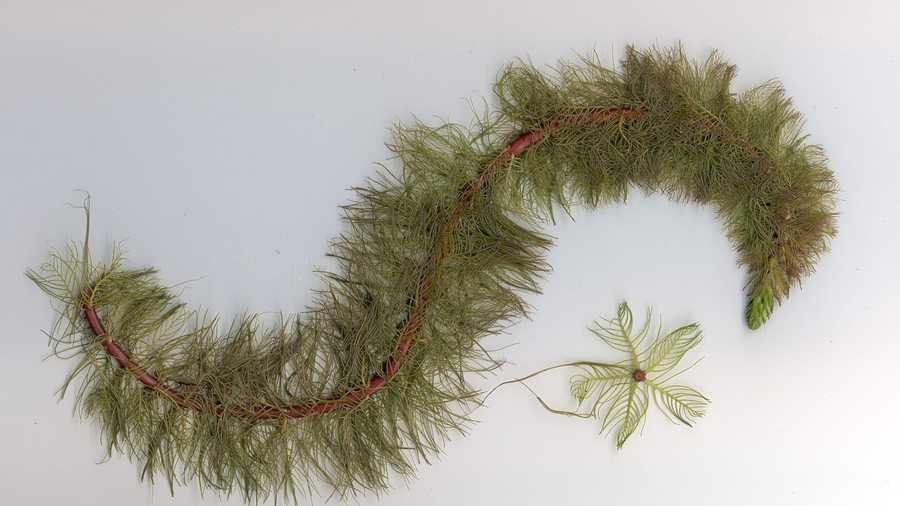Last updated: January 21, 2022
Article
Powerful Partnerships: Pawtuckaway Lake Improvement Association Gets Grant from the Lamprey River Advisory Committee to Help Fund and Remove Invasive Variable Milfoil
Content submitted by: Suzanne Petersen, Lamprey River Advisory Committee
Variable milfoil is an aggressive, invasive freshwater plant that is fouling New England’s lakes, ponds, and slow-moving rivers. It spreads rapidly both by seeds and by rooting of pieces that break off from the parent plant. Unlike native species of milfoil that grow slowly and don’t get tall, this plant is fast-growing and can reach 15 feet in height. No local animals eat it, and it can quickly take over and crowd out native plants. When it dies back at the end of the growing season, it decays, resulting in murky water and a foul odor. This plant is an enemy of clean water, good fishing, or swimming.

New Hampshire Department of Environmental Services
The Pawtuckaway Lake Improvement Association has been working hard for years to prevent, contain and remove variable milfoil from the lake. It has been a difficult process, but so far, they have succeeded in keeping the infestation at a very low level. Human divers look for the plants under water, which is difficult with low visibility and moving water.
If plants are found, the diver returns to the surface to gather flags to mark the spot, but finding the plant again can be difficult. Removing the plants cannot be done by untrained amateurs; each plant must be removed carefully so that the plant remains as intact as possible and any pieces that break off must be captured. The process is labor intensive and time consuming. Underwater visual surveillance is not possible for the entire lake using divers alone.
The dedicated group of lake volunteers applied for a Lamprey River Community Grant to pay for side-scan sonar and the associated software. The equipment allowed the detection team to scan large areas of the lake from the surface quickly and accurately, including areas that were impossible to assess until now. Using side-scan sonar, detecting variable milfoil was like looking for trees on a grassland… easy! The greatly improved detection facilitated removal.
Water from the lake is routinely released to the Lamprey River through two dams. Better control of the milfoil in the lake will greatly improve the chances that the Lamprey River will remain free of this nuisance plant. We were happy to help our partners in protecting clean water, resilient ecology, and enjoyable water-based recreation. Check out the full report.
